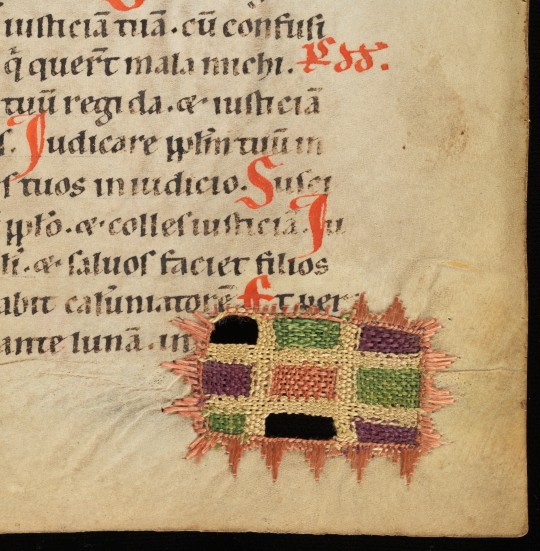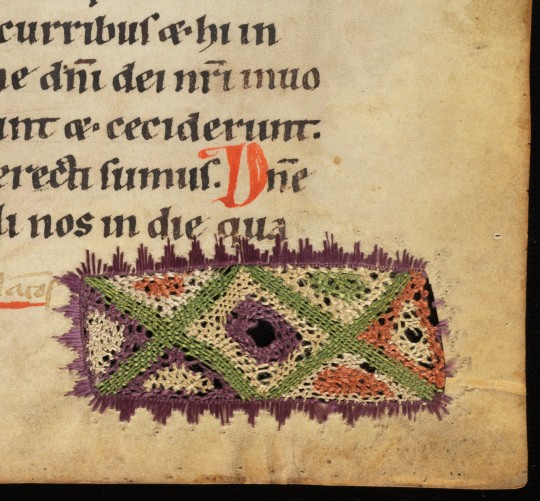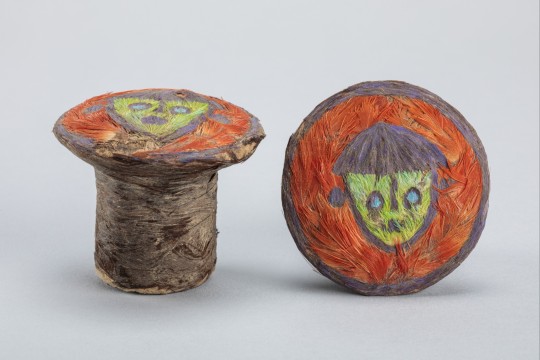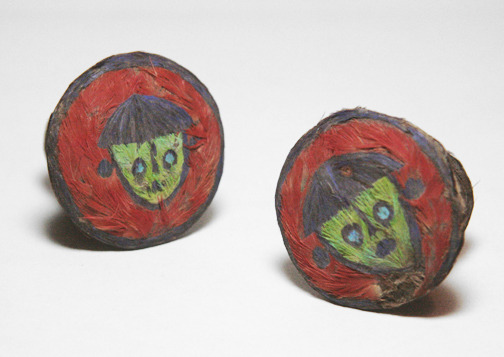#12th Century
Explore tagged Tumblr posts
Text

Aldruda Frangipane (born after 1120 – died after 1173) was a powerful noblewoman who ruled as regent and gained legendary status for her military leadership during the rescue of Ancona.
The regent of Bertinoro
Aldruda belonged to the powerful Roman Frangipane family. She married Rainier Calvaconti, Count of Bertinoro, but was widowed in 1144. Rather than remarry, she chose to take power into her own hands, serving as regent for her children. Her power was such that she continued to rule even after her eldest son reached adulthood.
Her court at Bertinoro was known for its refinement and intellectual vitality. It celebrated chivalric ideals and literature, and welcomed troubadours and poets.
To Ancona’s rescue
In 1173, the city of Ancona was besieged by the forces of Holy Roman Emperor Frederick Barbarossa, as part of his campaign to assert control over Italy. Ancona had aligned itself with the Byzantine Emperor Manuel I Komnenos, making it a target for imperial retribution.
Reinforcements came from Ferrara—and from Aldruda. The Countess of Bertinoro led her troops in person. Mounted on horseback, she rallied her soldiers with a rousing speech before engaging the enemy.
According to chronicler Boncompagno da Signa, the battle was won thanks to a clever ruse. Aldruda ordered her soldiers to attach two or three torches to each lance and march in a wide formation under cover of darkness. The sight created the illusion of a much larger army launching a night assault. The besiegers, believing themselves outnumbered, retreated.
Aldruda’s bravery became the stuff of legend. Byzantine chroniclers praised her as a courageous and generous leader who not only sent aid, but faced battle herself. In his orations, Eustathios of Thessaloniki described her armed with a lance, riding at the head of her cavalry. He likened her to biblical heroines such as Judith, and to the warrior queens of antiquity.
Following the rescue of Ancona, no further records of Aldruda survive.
If you enjoy this blog, consider supporting me on Ko-fi!
Further reading:
Allaire Gloria, “Alruda Frangipani”, in: Higham Robin, Pennington Reina (eds.), Amazons to fighter pilots, biographical dictionary of military women, vol.1
Eustathios of Thessaloniki, Secular Orations 1167/8 to 1179
Frison Carluccio, “Frangipane, Aldruda”, in: Dizionario Biografico degli Italiani - Volume 50
Jansen Philippe, “L’écho de l’événement : Boncompagno da Signa et le siège d’Ancône (1173)”
#aldruda frangipane#history#women in history#historyedit#warrior women#12th century#italy#italian history#women warriors#middle ages#medieval#medieval women
56 notes
·
View notes
Text
Reading sources of interest (Baldwin IV)

Letter from Baldwin to Constance of France (1177)
Letter of condolences from Saladin to Baldwin IV after his father, King Amaury’s passing. (1174)
A History of deeds done beyond the sea by William of Tyre
The Leper King and his heirs
I also recommend taking a look at his genealogy/family tree!
You can find it and other pertinent trees in the Leper King and his heirs as well.
@aurianavaloria also mapped the tree comprehensively.
I stopped doing my version because of that, but I might resume it since I honestly get too overwhelmed by the sheer amount of people and relationships in family trees and the process of making my own version might help me remember better without having to look for reference every now and then 😂 (mapping my family tree alone has been an arduous process of many years and my head is filled with thousands of names, so this should really be nothing, esp considering I also have part of Baldwin’s tree within my own and should be completely familiar with it by now)💀
I saw in comments and messages, both here and on TikTok, that there’s been some new people joining the community, so I wanted to offer a few of my fav starting places for reading real documents of the time. And others to gain a little perspective of the real side of things.
Add your own sources and resources! I would add more myself, but I don’t have time to look through my 340+ open tabs and remember it all lmaooo but I will update this into a masterlist along the way if u wish :3 (and if you know of better quality alternatives to the ones I���ve linked lmk)
Seguramente traduciré al español algunos de estos documentos, si están interesados 🤍


#history#historical documents#king baldwin iv#kingdom of Jerusalem#medieval history#12th century#crusades#medieval#baudouin iv#koh fandom#kingdom of heaven#the leper king#saladin ayyubi#salah ad din yusuf ibn ayyub#middle ages#research#historical research#archives
35 notes
·
View notes
Text


Late 12th century knight
Tip jar
#knight#knights#knight armor#armor#knightcore#medieval#knightposting#knight art#medieval art#knight kink#enclosed helm#flat top helm#12th century#artists on tumblr#art#illustration#traditional art#ink#acrylic#sketchbook#mixed media#digital art#original art#my art#Sexy knight just lounging there
2K notes
·
View notes
Text



medieval parchment repairs
in a psalter, south-western germany, late 12th/early 13th c.
source: Hermetschwil, Benediktinerinnenkloster, Cod. membr. 37, fol. 19r, 53r, and 110r
#12th century#13th century#repairs#mending#medieval manuscript repairs#sewing#book history#medieval studies#medieval art#psalter#parchment stitching
9K notes
·
View notes
Text

Castello Montalto Dora, Piedmont, Italy
Picture by Antonio Forte
#art#design#architecture#history#luxury lifestyle#style#luxury house#castle#luxury home#castello#castello montalto doria#piedmont#italy#castrum#castrum montesalti#12th century#antonio forte
662 notes
·
View notes
Text





"Glorification of the Virgin" mosaic in Santa Maria in Trastevere, Rome; Glorification of the Virgin. c. 1130-43
580 notes
·
View notes
Text

“What shall we hang? The holly or each other?”
Made a last minute print inspired by my favorite Toxic Christmas Movie, The Lion in Winter (1968). I always love doing a detailed piece like this! I’ll be selling prints at EBABZ tomorrow, but feel free to pick up a copy on my storenvy as well <3
#the lion in winter#tliw#the lion in winter 1968#my art#12th century#1960s movies#1960s#classic movies#illustration#Katharine hepburn#Peter O’Toole#eleanor of aquitaine#henry ii of england#cw animal death#cw blood#but its really fake dw#christmas#digital art#image description#image description in alt
966 notes
·
View notes
Text

The Queen Bride and Her Ladies-in-Waiting
Cersei’s bridal gown is inspired by Empress Matilda’s wedding bliaut, as illustrated in the Chronicle of Ekkhard von Aura (c. 1120), which depicts her 1114 marriage to Holy Roman Emperor Henry V. Meanwhile, her Baratheon crown is loosely based on the Sarmatian Gold Diadem (1st-century CE).
#asoiaf#asoif fanart#cersei lannister#folks this took me a YEAR to render#we are so fucking back#12th century#Jocelyn Swyft#Taena Merryweather
433 notes
·
View notes
Note
Do you know if you will sell that drawing of the three kings asleep in the same bed with the angel waking them? It was posted on christmas of last year. I would absolutely adore to have it as a christmas card to send to my friends & family :) much love ! Adore your work !!
That's a great idea ! I'm not able to manage an online shop myself at the moment, but I've added it to my INPRNT. I know due to shipping and costs it's not ideal for everyone, but it's alI can do for now. Hopefully I'll be able to setup a partnership have an online shop of my own in the future.
I've also added my Saint Michael and Michel Berthier manuscript redraw.


If you are in France, you'll also be able to get these next month at YCON in Montreuil, and probably later on at Paris Citypop. See you around !
618 notes
·
View notes
Text

Dunluce Castle has the most precarious perch of any castle in Ireland
#Irish history#Dunluce Castle#coastline#cliffs#Atlantic Ocean#UK#Ulster#rural britain#mediaeval#fortress#Middle Ages#12th century#precipice#seascape#ruins#Northern Ireland
503 notes
·
View notes
Text
Excluding me ofc <3
#baldwin iv#king baldwin iv#kingdom of heaven#king baldwin x reader#koh#king baldwin iv x oc#the leper king#12th century
214 notes
·
View notes
Text
"Scholars have offered a number of explanations for why Matilda chose to style herself as domina Anglorum [Lady of the English]. It has been suggested that she might have balked at usage of the term regina, which, translated into the Anglo-Saxon English cwen, implied the wife of a king. The title queen, then, carried with it representational difficulties, as it was the office of king, not queen, that Matilda was seeking. In contrast, the term domina, or hlaefdige in Anglo-Saxon (lady in modern usage), was used to describe a woman exercising political and military power, such as the ninth-century Mercian queen Aethelflaed. As some scholars have suggested, Matilda’s use of the term domina may be related to a wider European usage, as dominus, or lord, described any number of public roles and offices men such as kings performed. Yet another explanation is the convention of kings elected but not yet crowned using the title dominus during the interregnum before their coronation. The title domina Anglorum undoubtedly drew from a number of meanings present in twelfth-century Anglo-Norman society, but all described a woman exercising power. As the Lady of the English, Matilda advertised herself as an individual woman capable of possessing and wielding regal power."
— Charles Beem, "Empress Matilda and Female Lordship", The Lioness Roared: The Problems of Female Rule in English History
#historicwomendaily#empress matilda#the anarchy#12th century#english history#my post#i like Matilda A LOT I can't believe I haven't posted anything about her till date
970 notes
·
View notes
Text

When you invite all your friends over but everyone's got anxiety : V
Silly jokes aside,
Drew this based on the Lewis chess set from the British Museum ( apparently the remaining pieces are in the National Museum of Scotland in Edinburgh) ^^ the pieces are from the 12th century and carved from walrus ivory and whale's teeth. Apparently they were crafted in Norway. Tried my best to get accurate references and keeping the style of the pieces ^^ can't guarantee the exact accuracy tho lol still was stupidly fun to do
#artists on tumblr#illustration#archaeology art#archaeology#Lewis chess#Lewis chess set#12th century#13th century#middle ages#misiuszko
242 notes
·
View notes
Text



~ Pair of Ear Spools.
Date: A.D. 1000-1470
Place of origin: Central Coast, Perú
Culture: Chancay or Inca
Period: Late Intermediate-Late Horizon
Medium: Feathers, adhesive, gourd, and leather.
#history#museum#archeology#archaeology#pre columbian#12th century#15th century#peruvian#peru#south america#pair of ear spools#chancay#inca#indigenous#central coast#horizon period#intermediate period#feathers#a.d. 1000#a.d. 1470
630 notes
·
View notes
Text







music theory diagrams (& a guidonian hand)
from a composite manuscript containing various works on music theory (by guido of arezzo, hermann of reichenau, theogerus of metz, and others). southern germany, late 12th c.
source: Kassel, LMB, 4° Ms. math. 1
#12th century#music theory#medieval music theory#guidonian hand#mnemonics#guido of arezzo#hermann of reichenau#theogerus of metz#medieval manuscripts
322 notes
·
View notes
Text

Schloss Schönbühel, Schönbühel-Aggsbach, Austria,
Photo Courtesy of Atmos View
#art#design#architecture#history#luxury lifestyle#style#luxury house#luxury home#schloss#schloss schonbuhel#austria#melk#danube#12th century#atmosview#castle
680 notes
·
View notes